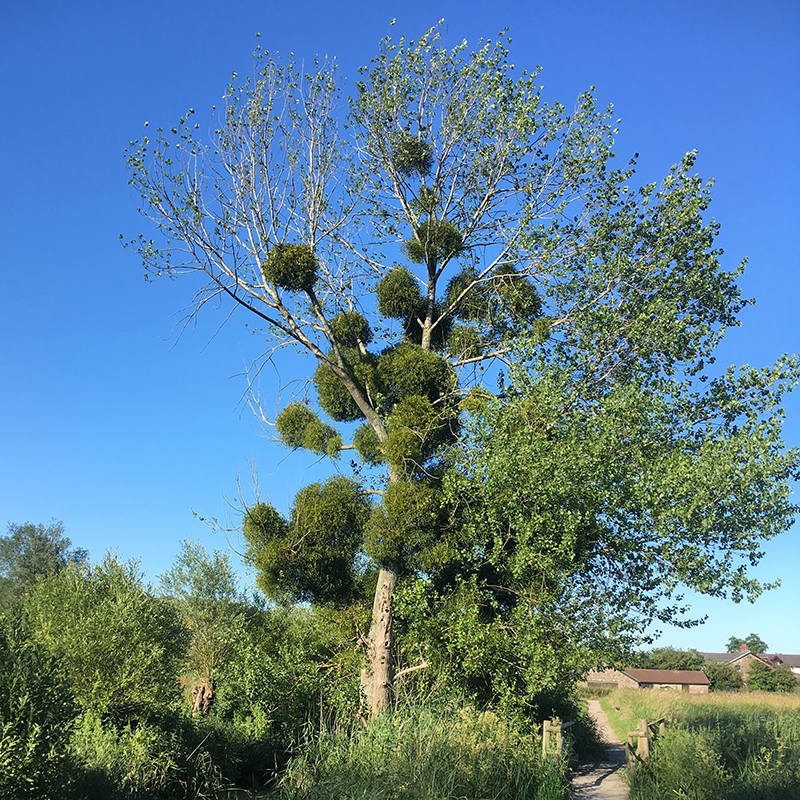Viscum album
This well-known evergreen shrub can be seen forming large spherical balls up to 1m wide on various trees but especially apple and lime. Mistletoe flowers are very small, inconspicuous, and have four tiny petals. The flowers are dioecious which means that male and female flowers are produced on separate plants; female plants are therefore highly desirable at Christmas time for their use in decoration. Mistletoe flowers can be seen from February to March but it is the foliage and berries that are usually recognised.
The narrow elliptical leaves are green, leathery and grow in pairs (they look like little propellers). The berries are sticky and white and are found in clusters of two to six. They appear from about October until May, and are dispersed by birds as they feed.
Mistletoe is a semi-parasitic shrub that has the ability to photosynthesise (i.e. produce its own energy), but also takes water and nutrients from its host tree using specialised roots.
There are six species of insect which are specialist mistletoe feeders including the rare mistletoe marble moth, and the mistletoe weevil which was only discovered in Britain in 2000.
Where and when to see it
The leaves of mistletoe are green all year but are more visible in the winter once the other trees have lost their leaves.
Look up! Mistletoe grows high in the canopy and can be found in orchards, hedgerows, parks and gardens on apples, limes, poplars, blackthorn, hawthorn, maples and willows.
View a mistletoe 10km distribution map of Wales
Mistletoe leaves, stems and berries are poisonous!
Did you know?
Mistletoe leaves, stems and berries are poisonous!



